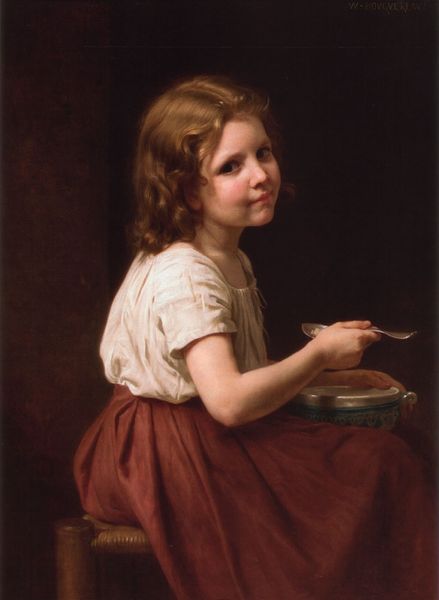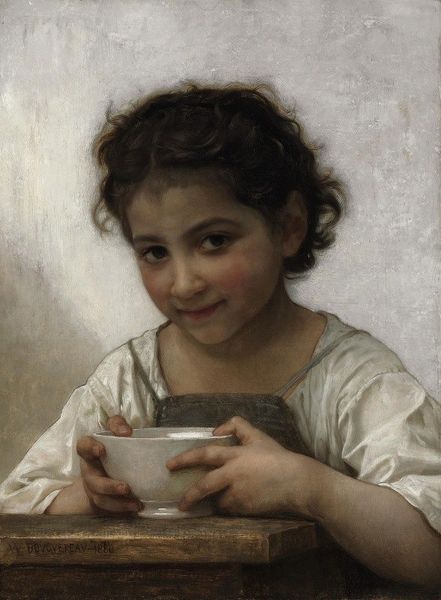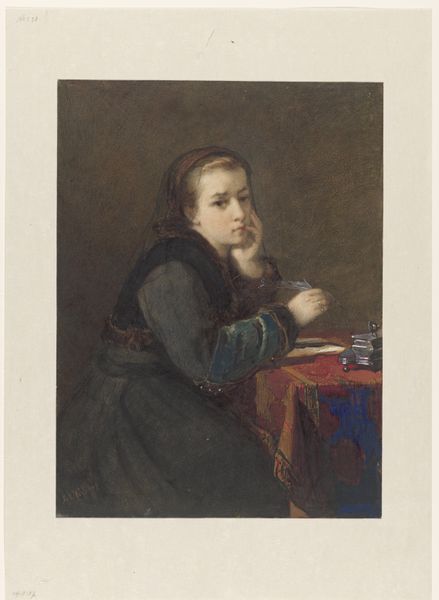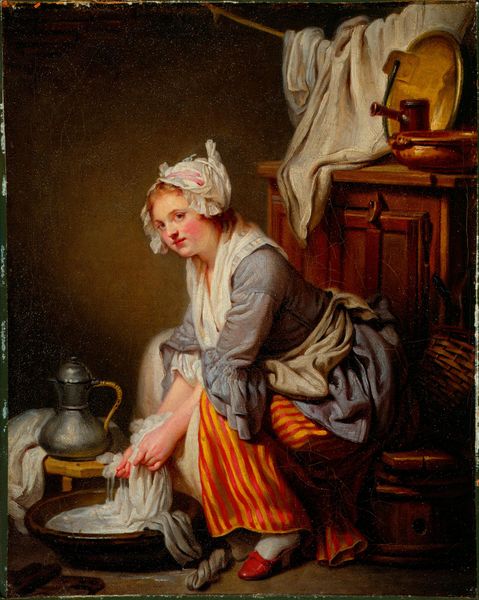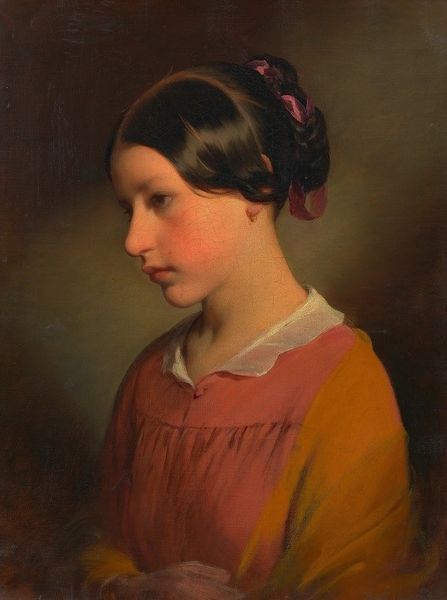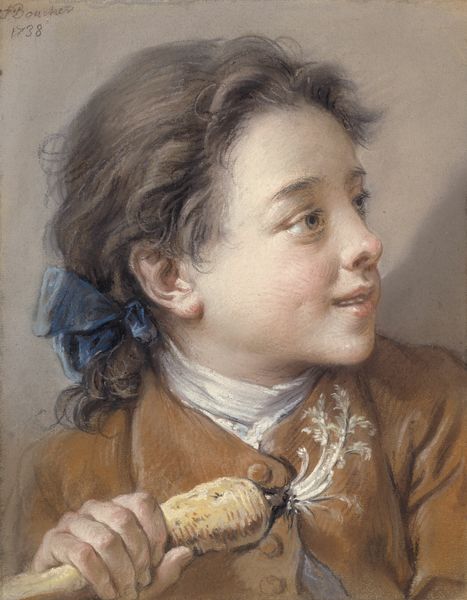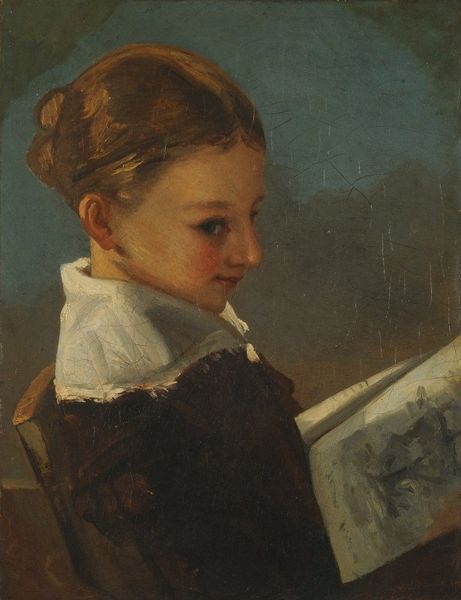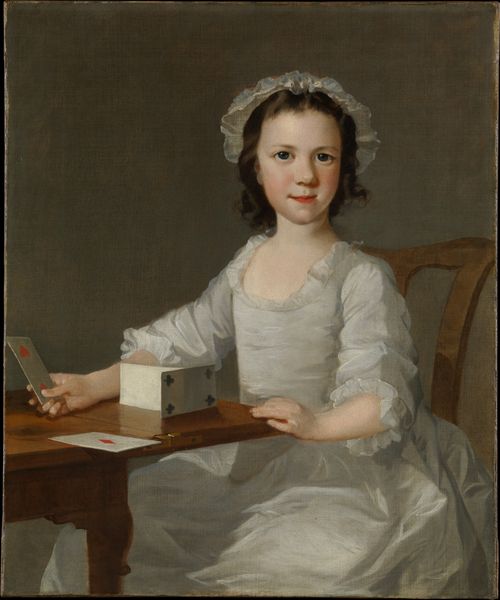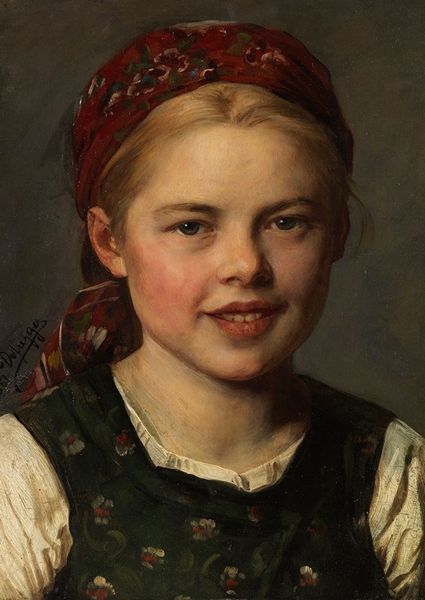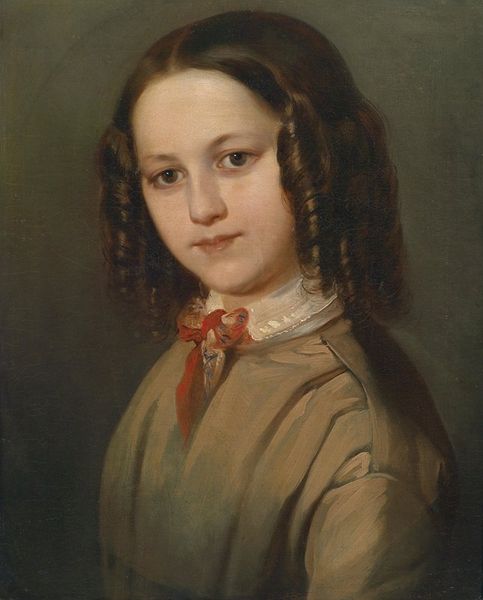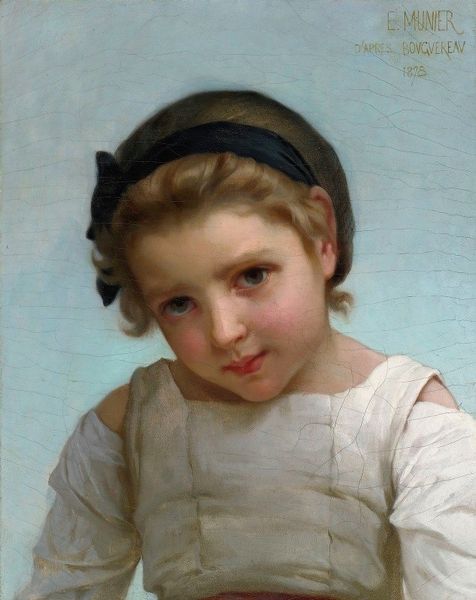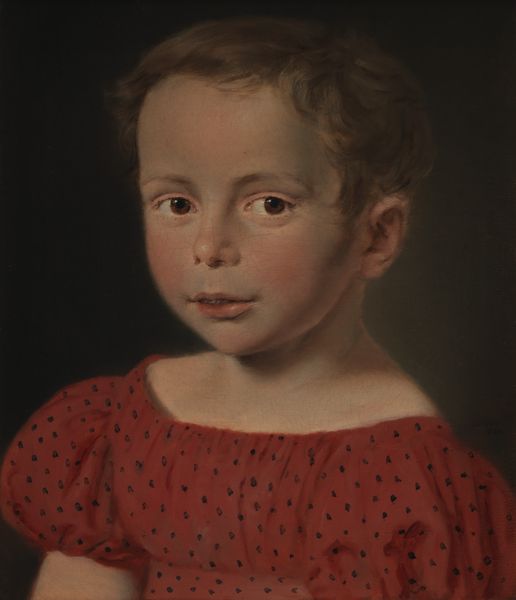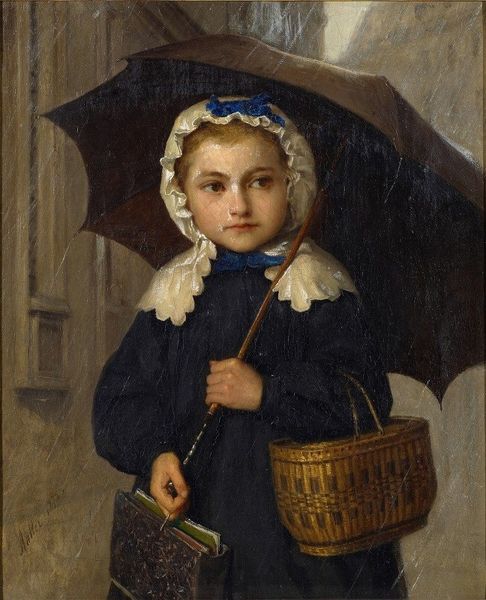
Portrait of a Little Girl, Elise Købke, with a Cup in front of her 1850
0:00
0:00
painting, oil-paint
#
portrait
#
painting
#
oil-paint
#
romanticism
#
realism
Dimensions: 39 cm (height) x 35.5 cm (width) (Netto), 51 cm (height) x 47.5 cm (width) x 7 cm (depth) (Brutto)
Curator: Well, here we have Constantin Hansen's "Portrait of a Little Girl, Elise K\u00f8bke, with a Cup in front of her," an oil painting created around 1850. Editor: It's striking how somber it feels. There's a stillness in her eyes, almost a melancholy, despite the seemingly simple subject. The scale of the girl is large, creating an almost overwhelming sensation. Curator: Indeed. It’s interesting to consider the socio-political context of this work. During this period, portraiture often served to represent status and ideals, but here the girl seems quite removed from such symbolism, as if it aims for straightforwardness. What do you make of the materials? Editor: The texture is very controlled; Hansen is working in incredibly fine layers, especially in the rendering of the girl's face and the delicate rim of the teacup. It gives it a subdued yet solid feel, no bold brushstrokes. I wonder what choices Hansen made in the production, perhaps his intention was to make her a part of a bigger narrative through labor. The making is almost too good! Curator: And how might museums contribute to such narrative through their framing choices and lighting? It would be remiss not to wonder what narrative we enforce or perpetuate within gallery context? Editor: Exactly. Back to materials - notice how the red and the dull background might not seem as vibrant by modern-day production. What might have gone in the making of that red and the oil consistency that keeps the overall image so somber. Was it always this color or the product of aging materials? Curator: Those are fascinating questions to ask! Do you consider realism to be one of the more influential aspects? And how it represents Danish paintings during the mid-19th century. Editor: For me, the interplay between what the artist tried to project on the girl's countenance is the more significant influence here. To show and almost perform realism seems almost disingenuous for that era, to portray life as life is without embellishment. Curator: It certainly pushes us to reconsider traditional approaches to production! This kind of art history can broaden our perspective! Editor: Exactly, perhaps this makes the artist an artist who is pushing the norm back then...a question to muse.
Comments
No comments
Be the first to comment and join the conversation on the ultimate creative platform.
